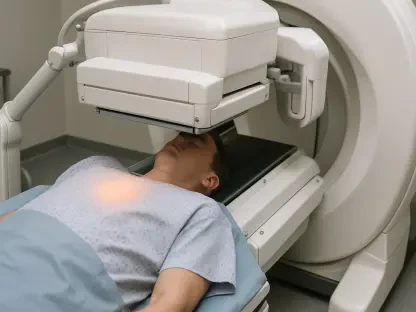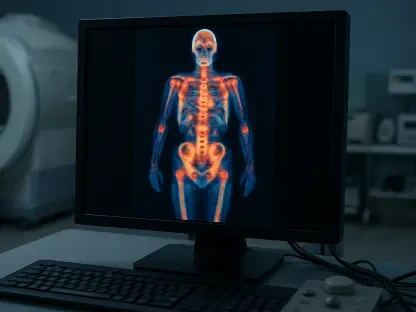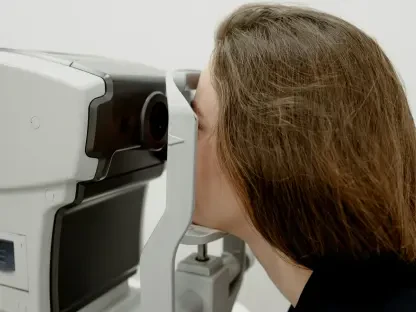The design of Electronic Health Record (EHR) systems is critical in determining the financial and operational outcomes for healthcare organizations, affecting everything from clinical workflows to staff satisfaction. Effective EHR architecture can dramatically improve efficiency and reduce costs across healthcare settings, leading to enhanced patient care and better financial performance. Additionally, the seamless integration of modern EHR systems into daily healthcare operations ensures that institutions remain agile, adaptive, and capable of meeting future challenges head-on.
The adoption of well-designed EHR systems means reducing the manual entry of patient information, enabling quicker access to data, and ultimately, accelerating patient throughput. Reduced administrative burdens allow healthcare providers to allocate more time to patient care rather than paperwork. These systems make it easier for clinicians to access and share patient information, facilitating timely and accurate decision-making processes. By minimizing the chances of errors and optimizing the management of patient records, healthcare organizations realize substantial cost savings, demonstrating the intrinsic value of EHR systems.
Workflow Optimization
Streamlined clinical workflows, enabled by advanced EHR systems, are fundamental to achieving economic efficiency in healthcare environments. Effective EHR designs prioritize minimizing manual administrative tasks and assure seamless patient information access, leading to expedited patient processing and lower administrative workloads. This efficiency directly translates to tangible cost savings for healthcare providers, reinforcing their financial stability. As workflows evolve, ongoing evaluation and refinement are essential to sustaining these efficiencies and adapting to new healthcare practices and technologies.
Medication reconciliation serves as a prime example where contemporary EHR designs have produced remarkable advances, reducing both the time required and the potential for errors. Integrating medication records with up-to-date patient information has streamlined this once cumbersome and error-prone process. Clinicians can now access comprehensive medication histories swiftly, ensuring patients receive the correct prescriptions and dosages. Such improvements not only elevate patient care standards but also curtail the costs associated with medication errors and related complications.
Moreover, EHR systems equipped with advanced capabilities can track patient information in real-time, enable better coordination among healthcare professionals, and support more informed clinical decisions. This level of precision in managing patient data significantly reduces the likelihood of redundant tests and procedures, further driving down healthcare costs. Enhancing workflows through robust EHR design also assists in improving patient outcomes, as timely and accurate data availability is paramount for effective treatment plans.
Addressing Technical Debt
Legacy IT systems pose significant challenges for healthcare organizations, often carrying hidden costs that hamper both clinical and financial operations. Outdated EHR systems frequently fail to incorporate contemporary innovations and struggle to meet evolving interoperability standards, leading to increased maintenance expenses and operational inefficiencies. The resources required to maintain and upgrade these aging systems divert attention and funds away from innovation and impose scalability hurdles. These issues underline the urgency to transition to modern EHR systems designed to accommodate future technological advancements seamlessly.
Security vulnerabilities and system downtime, exacerbated by technical debt, are critical concerns for healthcare organizations. The implications of these issues are starkly illustrated by recent high-profile cyberattacks targeting health systems. These incidents not only disrupt essential clinical services but also pose severe financial and reputational risks. Outdated systems are often more susceptible to such breaches, making it crucial for healthcare organizations to invest in secure, modern EHR solutions that offer robust protections against cyber threats.
Up-to-date EHR systems reduce the hidden costs associated with technical debt by streamlining maintenance processes and enhancing system reliability. Healthcare providers can then refocus their investment and effort on fostering innovation and improving patient care. Moreover, modern EHR architectures are designed to be more adaptable and scalable, facilitating seamless integration with other emerging technologies and enabling the healthcare industry to respond proactively to changing demands. Addressing technical debt through advanced EHR systems is a strategic imperative that not only improves operational efficiency but also fortifies healthcare organizations against future challenges.
Enhancing Staff Satisfaction
EHR usability directly influences staff satisfaction and retention, particularly in today’s competitive healthcare labor market. Poorly designed systems are a significant source of frustration among clinicians, contributing to alert fatigue, high click counts, and limited customization options. These factors impose a substantial cognitive burden on healthcare providers, leading to inefficiencies and decreased job satisfaction. Conversely, user-friendly EHR designs that prioritize clinician needs can significantly enhance staff well-being and productivity by streamlining workflows and reducing unnecessary administrative barriers.
Investments in EHR transitions often underscore the importance of user-centered design in promoting clinician satisfaction. Reliable system performance and seamless integration with other clinical platforms are pivotal aspects that bolster clinician confidence and trust in EHR systems. When healthcare providers can depend on their EHR for accurate and effortless access to patient information, it reduces stress and enhances clinical efficiency. This positive user experience is critical for retaining skilled clinicians and ensuring the sustained delivery of high-quality patient care.
Moreover, fostering a positive work environment through well-designed EHR systems can aid in alleviating the broader challenges of workforce shortages and burnout in the healthcare sector. Satisfied and engaged staff are more likely to remain with their organizations, reducing turnover rates and associated recruitment costs. As healthcare institutions continue to navigate an increasingly competitive labor market, prioritizing EHR usability and clinician satisfaction becomes a strategic advantage. Ensuring that EHR systems are intuitive, efficient, and supportive of clinical workflows not only enhances staff morale but also ultimately benefits patient care and organizational performance.
Integration and Unified Systems
The transition from fragmented systems to unified enterprise solutions offers substantial economic benefits for healthcare organizations. Unified EHR systems streamline interface maintenance costs, eliminate redundant data entry, and simplify training and support processes, leading to significant operational efficiencies. By integrating disparate systems into a cohesive platform, healthcare providers can achieve a more seamless flow of information, enhancing both clinical and administrative operations.
Unified EHR systems also enable sophisticated data analytics by providing comprehensive access to patient data. This holistic approach supports more accurate clinical decision-making and robust financial planning. With comprehensive patient information readily available, healthcare providers can identify trends, predict outcomes, and make data-driven decisions that enhance patient care and operational efficiency. Furthermore, these integrated systems facilitate improved care coordination among various healthcare stakeholders, leading to better patient outcomes and streamlined clinical processes.
The shift towards unified EHR systems is indicative of a broader trend in healthcare that emphasizes efficiency, integration, and advanced analytics. By consolidating multiple fragmented systems into a single, cohesive platform, healthcare organizations can reduce complexity and improve the overall user experience. Streamlined training, support, and maintenance processes result in cost savings and operational efficiencies, ultimately contributing to better financial performance. The economic benefits of unified EHR systems are clear, reinforcing the case for ongoing investment in integrated solutions that support comprehensive data access and advanced healthcare analytics.
Modern Architecture and AI Integration
The design of Electronic Health Record (EHR) systems plays a pivotal role in shaping the financial and operational outcomes of healthcare organizations, impacting clinical workflows and staff satisfaction. Effective EHR architecture can significantly boost efficiency and cut costs across healthcare environments, leading to improved patient care and stronger financial performance. Moreover, seamless integration of advanced EHR systems into the daily functioning of healthcare institutions ensures they remain agile and capable of addressing future challenges.
Well-designed EHR systems reduce the need for manual entry of patient data, provide faster access to information, and ultimately speed up patient throughput. By lessening administrative burdens, healthcare providers can devote more time to patient care rather than paperwork. These systems empower clinicians to access and share patient information more easily, facilitating accurate and timely decision-making. By reducing errors and optimizing patient record management, healthcare organizations achieve significant cost savings, highlighting the intrinsic value of EHR systems.









